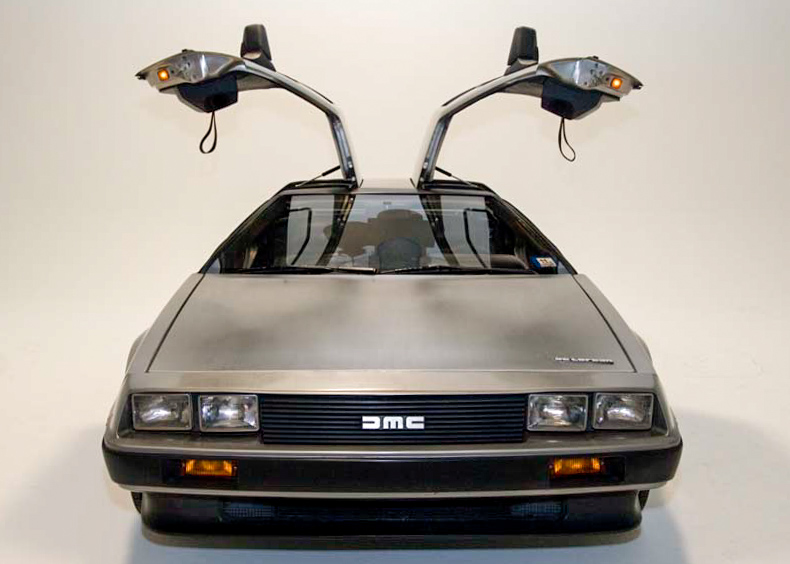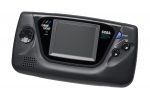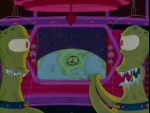The DeLorean DMC-12 is one of those rare cars that’s cemented itself firmly in geek culture, perhaps only matched by the Batmobile in legendary status. So you might be surprised to learn that the DeLorean was only on the market for three years. That’s a remarkably short lifespan even in the hyper competitive auto market. Even the much maligned PT Cruiser stuck around for ten years before it got kicked to the curb. So how did the Doc’s dimension surfing whip run outta time so quickly?
The DMC-12 was the brainchild of John DeLorean, a former engineer for General Motors. DeLorean had made a name for himself designing classic American muscle like the Pontiac GTO and Firebird, the latter of which being a famous movie car in its own right.
In 1972, DeLorean was promoted to General Motors’ VP of Production, and almost immediately started to butt heads with other higher ups over the company’s direction. Particularly its sales tactics in the form of rebates. He claimed that the company had no “forward response” as to “what the public wants today”. “A car should make people’s eyes light up when they step into the showroom. Rebates are merely a way of convincing customers to buy bland cars they’re not interested in.” So he decided to do just that, make an American car that would make people’s eyes light up.
A year later, John DeLorean left GM to start his own auto maker, with hookers and blackjack! Well, maybe not the blackjack, but there was a lot of coke involved, allegedly. After founding the DeLorean Motor Company (DMC for short), he quickly got to work designing their first, and only, car.
The DMC-12, as it became known, would be a revolution in design. It would be American with a strong European pedigree. A sleek, mid-engine, rear wheel sports car with the frame from a Lotus Esprit. Then they added a fiberglass body, gull-wing doors, and unpainted brushed stainless steel body panels. Everything about the DeLorean screamed the future. Or at least what was considered futuristic in late 70’s America. To quote Old Man Peabody, it looked like an airplane, without wings.

In reality, it was a bird that had its wings clipped. One of the sticking points during the DMC-12’s design phase was what engine to use. The car was originally supposed to have a Wankel rotary, the same used by Mazda in their RX-7. One engineer favoured Ford’s venerable Cologne V6. However, the company eventually settled on the 2.85L V6 PVR ZMJ-159, manufactured as a joint venture between Peugeot, Renault, and Volvo. That’s where the problems started.
You see, the DMC-12 looked like a sports car, it was priced like a sports car, but it was no sports car. The rather wimpy 130bhp PVR engine could accelerate the vehicle from 0-60 in a leisurely 10.5 seconds. Now, this wasn’t terrible by late 70’s standards, but it was less powerful than the 144bhp engine featured in the Lotus it was based on. Which is a bit of a joke considering Lotus’s engine was a small four cylinder, without a turbocharger. It was certainly less impressive than some of the V8 muscle DeLorean had worked on at GM years prior.
The car had other technical issues as well. The alternator was not powerful enough to run all the car’s electronics, resulting in a slow battery drain. The windows in the complicated gull wing doors were too small for any decent airflow. The radio also had reception problems. Basically, anything that could go wrong with them, did go wrong with them.

On top of that, the DMC-12 was starting to suffer from major price creep. When it was first announced, DeLorean stated a list price of $12,000 USD. That soon ballooned to $25,000, or roughly $70,500 in today’s money. This is what you’d expect to pay for a brand new BMW M4 Coupe here in the fabulous future, with money to spare for the hover conversion kit. By the time the car finally wrapped up production in 1983, it was selling for a whopping $35,000, or $90,000 today.
The DMC-12 ended up costing more than double that of a brand new Chevrolet Corvette, which at the time was a proven model with 33% more power. So it’s not a huge shock to see why the DeLorean did so poorly. It was selling at a luxury price, but it had no luxury whatsoever.
In 1982, John DeLorean became subject of an FBI sting operation and was arrested for conspiracy to traffic cocaine. The DeLorean Motor Company went bankrupt late that same year. The remaining stock of vehicles were sold off to Consolidated International, aka the Big Lots chain of American discount stores.
Following that, the DMC-12 should have just disappeared into relative obscurity, if it were not for a little movie about time travel that came three years after the company folded.
For 1985’s Back to the Future, the car was selected for the time machine, mainly due to a one-off gag where Old Man Peabody, owner of the 1955 Twin Pines farm, mistakes it for an alien spaceship. The DMC-12 with its stainless steel body and gull-wing doors fit that to a tee. Plus Doc Brown seems like the kind of guy who would convert an obscure sports car into a time machine. If you’re going to time travel, you’ve gotta do it with some style.

Since then, the DMC-12 has become a cult classic among collectors. While some have converted their cars to look like the time machine from the films, many are maintained as they were. Others have modified them with more powerful modern engines that finally do the classic spaceship justice. An turbocharged homage to a brief three year period when the coolest lame sports car captured the hearts of film goers and car enthusiasts around the globe.





